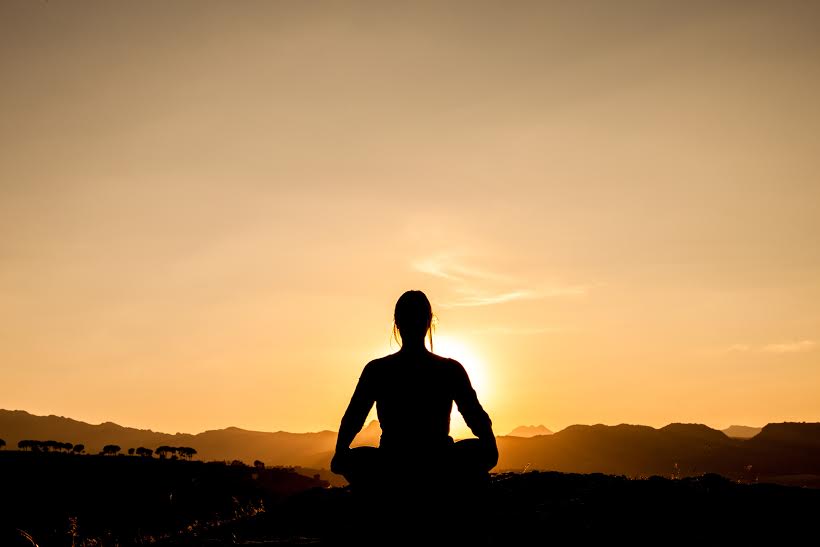
CHAKRA MEDITATION
Sometimes we meet a stranger and instinctively connect with them. We all have felt it at some point
of time. This attribute is because of the fact that your auras are vibrating at the same resonance. The
universe is governed by electromagnetic energy and we, as human form, reflect this energy as bio-
magnetic energy. Imagine this field of energy as a donut shape extending and encompassing around
our bodies creating our unique aura. The chakras, which roughly translate to “wheel”, represent
seven focal points of this energy in our bodies located from base of spine through crown of head in
one single line. Scientifically, there are many nerve points and ductal glands located at these chakra
points. Hence, if chakras are blocked, the flow of energy is also blocked and that can lead to various
ailments. The meditation that pertains to opening and awareness of these chakras is called Chakra
Meditation.
Understanding of 7 major Chakras:
- Muladhar Chakra: Located at the base of spinal column and is related to the perineum near the anus. It serves as foundation of one’s personality and keeps one grounded and stable if balanced. Imbalanced muladhar can lead to insecurity, fearfulness as psychological and constipation/diarrhea as physical traits.
- Swadisthana Chakra: Located near the coccyx (tailbone) and is connected with the reproduction glands. This chakra is concerned with assimilation of sexual expression and creativity. A balanced swadisthana represents self-expressions and joy. Imbalance can lead to disturbed relationships, violence and addictions.
- Manipura Chakra:Located at the navel. It aids in digestion and metabolism. Psychologically it represents one’s opinion and command. Blocked Manipura chakra can lead to impaired digestion as physical, and arrogance, dominance and being excessive controlling as mental traits.
- Anahata Chakra:It is located at the centre of the chest near the heart. The inner aspect of this chakra is driven by unconditional love and compassion. Balanced Anahata creates a physically and emotionally balanced personality with qualities of nurturing, compassion and empathy. Imbalanced Anahata can lead to being critical, possessive, moody, hypertensive and can lead to stress related heart diseases.
- Vishuddha Chakra:Located at the level of throat around thyroid gland. Throat is the place from where we can speak, express our voice, communicate our feelings and convey our thoughts. A balanced Vishuddha leads to all these traits while imbalance can manifest as ear, nose, throat and respiratory problems in the physical body. Mentally, the imbalanced Vishuddha can cause inability to express oneself, too much or too less talking, confusion and irritability.
- Ajna Chakra:It is located at the centre of brows at the level of pituitary gland. Ajna chakra involves our mental and reasoning abilities, and our psychological skills. It is purely associated with "manas" or mind and is the chakra of wisdom. Imbalance can lead to headaches, nightmares, lack of concentration, difficulties in visualization and loss of logical thinking.
- Sahasrara Chakra:Located on the top of head. Sahasrara chakra relates to one’s highest peak of wisdom and enlightenment. It enables us to gain internal awareness through meditation and prayer. Imbalanced sahasrara leads to day dreaming, confusions, lack of awareness and difficulty to concentrate or meditate.

